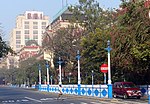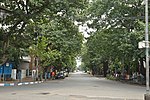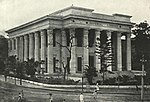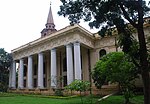Black Hole of Calcutta

The Black Hole of Calcutta was a dungeon in Fort William, Calcutta, measuring 14 by 18 feet (4.3 m × 5.5 m), in which troops of Siraj-ud-Daulah, the Nawab of Bengal, held British prisoners of war on the night of 20 June 1756.: 58 John Zephaniah Holwell, one of the British prisoners and an employee of the East India Company, said that, after the fall of Fort William, the surviving British soldiers, Indian sepoys, and Indian civilians were imprisoned overnight in conditions so cramped that many people died from suffocation and heat exhaustion, and that 123 of 146 prisoners of war imprisoned there died. Some modern historians believe that 64 prisoners were sent into the Hole, and that 43 died there. Some historians put the figure even lower, to about 18 dead, while questioning the veracity of Holwell's account itself.
Excerpt from the Wikipedia article Black Hole of Calcutta (License: CC BY-SA 3.0, Authors, Images).Black Hole of Calcutta
BBD Bag North, Kolkata B. B. D. Bagh (Kolkata)
Geographical coordinates (GPS) Address Nearby Places Show on map
Geographical coordinates (GPS)
| Latitude | Longitude |
|---|---|
| N 22.573357 ° | E 88.347979 ° |
Address
Black hole of Calcutta
BBD Bag North
700062 Kolkata, B. B. D. Bagh (Kolkata)
West Bengal, India
Open on Google Maps









